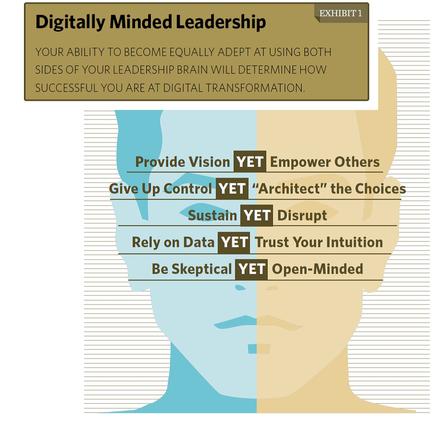
Positively challenging the status quo is essential, as is navigating the internal politics of an organisation to drive transformational change.
In my article, Digital transformation isn’t just about employing a CDO I discussed digital transformation and touched briefly on how important it was for any digital transformation to be led by the right person, be that a CIO, CMO, CDO or COO.
The aim of digital transformation is to drive continual improvements in services, products and experiences that your customers will love and actively promote. I want to continue the digital transformational theme but delve deeper in to the leadership side of a transformation as this will heavily influence the outcome of any change initiative, digital or otherwise. Get it wrong and it will be to the detriment of your customers.
Before any transformation can really be successful, your chosen digital transformation leader should possess a number key attributes, such as a visionary with a willingness to change the way an organisation operates whilst balancing the current and future needs as well as the ability to empower individuals/teams. Their ability to converse with all parts of the organisation in terms of customer outcomes rather than technology is also fundamental, that said being technology literate is also important.
Who leads is more important than ever
Lack of a clear strategy, leadership and the inability to balance the “old and new worlds” as well as being unable to attract and retain talent will seriously inhibit any organisation’s digital aspirations.
This digital leadership position is critical in bringing those that are less digitally inclined along for the journey, by being a visionary and story teller who can navigate through what is bound to be periods of uncertainty and fluidity.
Their role is to lead the business strategy, vision creation, execution and to give guidance, where they must empower and drive their teams to deliver on that strategy and vision rather than dictate.
Positively challenging the status quo is also essential, as is navigating the internal politics of an organisation to drive transformational change and to realign mind-sets to new digital way.
Read more: CIO to COO: Lessons from the cloud
The appropriate culture and empowering of teams is key to attracting and retaining your people, whilst also providing a working environment that supports cross team working and collaboration.
Leaders must show true empathy and listen to their people and customers so they are able to identify the root cause of any problem, rather than going straight to a solution.
Critical to any transformation is the ability of the leader to get the company executive team on board and the organisation as a whole excited by their vision and strategy for the transformation. This will help bring teams and people along for the ride. Articulating the new digital world will also help your teams decide if they actually want to buy in to the transformation.
“On making people pay attention: 'You can have the best technology, you can have the best business model, but if the storytelling isn't amazing, it won't matter. Nobody will watch.’’
Read more: Westpac CIO Dawie Olivier on 'The killer app for today’s ICT teams'
- Jeff Bezos

The title of the person leading the transformation is not as important as the characteristics/personality of that leader, such as being transparent, visible, with the ability to model the new behaviours required.
A visionary leader is also critical to any digital transformation, especially for their ability to quickly gain organisational trust allowing them to create, execute and embody the transformation vision and business strategy.
With the variety of generations now in the workforce understanding how to/what motive/s these people are essential – it could be as simple as celebrating success and getting to know them as individuals, and what drives them. Knowing your people will give you an insight into what motivates and ultimately engages them to ensure a successful transformation and a good leader with all the right characteristics is essential for this.
Key leadership characteristics/requirements:
- The remit and confidence of the Executive team to drive change
- Technology literate
- Challenge the status quo whilst balancing old and new worlds
- Visionary story teller
- Models future state through actions
- Navigate internal politics
- Gaining organisational trust
- Creating and gaining buy in to a digital vision
- Champion change
- Empower and engaging teams
- Executing and driving delivery of strategy
- Collaborative engagement
- Customer outcomes rather than technology.

Peter Yates (@peteyatesnz) is head of operations and platform delivery at Spark Ventures.
Send news tips and comments to divina_paredes@idg.co.nz
Follow CIO New Zealand on Twitter:@cio_nz
Sign up for CIO newsletters for regular updates on CIO news, views and events.
Join the CIO New Zealand group on LinkedIn. The group is open to CIOs, IT Directors, COOs, CTOs and senior IT managers.
